Photographs: Courtesy, Business Standard Sreelatha Menon in New Delhi
Health economist and advisor to the High-Level Expert Group on Universal Health Care, S Selvaraj says that tackling lack of doctors in India will take time to sort out, but providing free drugs can be done immediately:
What will be the most important component of the universal health care (UHC) package that the 12th Plan is likely to unfold?
Of all the components of UHC, strengthening public health system in the country is the most significant. The pacing and phasing of reforms are critical and, therefore, free distribution of drugs is likely to be taken up immediately. This is expected to provide significant financial risk protection to households.
...
Can India sustain the 'free for all' generic drugs plan?
Photographs: Oka Barta Daud/Reuters
The High-Level Expert Group (HLEG) on UHC has asked for distribution of free drugs as the way forward. But, why did free drug distribution decline from 18 per cent in the 1980s to just four per cent in the first place?
Globally, only seven countries are behind India in terms of public health spending. Both the Central and the state governments had to cut down public expenditure 1990 onwards.
The under-resourced public health facilities were forced to prescribe medicines, which saw patients buying drugs from the open market in large scale. Gradually, this has led to a situation where a household's 70 per cent of health care expenditure is on buying medicines.
...
Can India sustain the 'free for all' generic drugs plan?
Photographs: Ints Kalnins/Reuters
Has the health ministry identified a strategy for procurement and distribution of generic drugs?
The health ministry, as I believe, is putting in place a mechanism that would tie in financial allocation to a host of reforms, expected to improve governance and accountability in the medicine supply system in the country.
The proposed system is on the lines of Tamil Nadu Medical Service Corporation, the time-tested and successful model based on the principles of 'centralised procurement and decentralised distribution'. Since the state governments do not have the fiscal width currently to implement the same, the Central government is expected to contribute 75 per cent of the additional funds.
According to the current estimates, the additional funds are expected to be Rs 4,000-5,000 crore (Rs 40-50 billion) a year. This proposal already has the backing of the Prime Minister's Office and the Planning Commission.
...
Can India sustain the 'free for all' generic drugs plan?
Photographs: Reuters
Some states like Kerala, Tamil Nadu, Rajasthan and Bihar are already procuring generic drugs and distributing these for free to patients. How will the Central procurement plan work in this scenario?
The additional funding likely to be allocated by the Centre for the scheme will help the states to shore up their fiscal position to procure medicines and distribute these freely to patients.
Are there enough generic drug companies to fulfil the demand of the government health sector? Which are the existing players? In case of these companies falling short, is there a way to generate more supplies?
Well, India has a large number of generic drug companies, close to 10,000. Nearly 250 of them are large and medium industries, while the rest are small-scale players. We not only have an adequate number of generic companies; India is also in a position to supply cheap and quality generic drugs to the world. Most Indian generic drugs are extremely happy with this decision and are likely to benefit from the scheme. The real ultimate beneficiary, however, would be patients.
...
Can India sustain the 'free for all' generic drugs plan?
Photographs: Reuters
Do you see a parallel in the Obamacare approach in the US? The country is also going to take up generics. Is that the strategy in other nations that follow UHC?
Several industrialised countries are moving towards generic drugs. These are substituting branded medicines across the world. The US is no exception. Recently, Spain had announced a substantial cost savings plan from generic substitution.
According to recent estimates, Spain is expected to save about $1 billion while the US had saved about $1 trillion in the last 10 years from generic substitution. Thailand and China, which are approaching 100 per cent universal coverage, are moving substantially towards generics.
...
Can India sustain the 'free for all' generic drugs plan?
Photographs: Soe Zeya Tun/Reuters
The UHC has focused on free drugs. But states with good health indicators like Kerala and Tamil Nadu have not confined themselves to free drugs. They have sufficient doctors at the primary health care (PHC) level, too. But you are only asking for nurses for PHC.
Free drugs is only a part of the grand package recommended by HLEG. Besides, drugs would put pressure on doctors to be present there. Getting doctors will take time, while this can be done immediately. So, this is a beginning.
Bihar spends Rs 93 per capita on health with pathetic results, while Kerala spends Rs 287 — giving it the best health indicator in the country. What is the portion they spend on doctors and drugs?
On an average, salaries and other compensation account for 40 per cent of the government's public health spending, while medicines account for 10 per cent. However, the state governments spending on medicine varies considerably from as high as 13-14 per cent in Tamil Nadu and Kerala to five per cent or less in Punjab, Uttar Pradesh and Bihar. The Central government at present spends 10-12 per cent of its overall expenditure on drugs. With additional funds for medicine procurement, the Centre may end up spending 14-15 per cent, but a substantial share would go to the states.
Can India sustain the 'free for all' generic drugs plan?
Photographs: Adrees Latif/Reuters
Can inclusion of private providers not take care of shortage of doctors at the PHC level?
According to HLEG's recommendation, private facilities will be contracted-in to fill the gaps in the public health system. But private providers in India cannot be seen as a monolithic.
They vary from five-star hospital variety to sole providers. And, unlike the urban areas, rural areas are short of allopathic private providers. So, strengthening public health system appears to be the only option now.
...
Can India sustain the 'free for all' generic drugs plan?
Photographs: Reuters
What is the guarantee that the free drug regime won't become a source of corruption?
While monopsony and economies of scale will help government to procure quality drugs at a cheaper rate, the states are expected to move towards an accountable system. One of the ways to make the system transparent is enactment of Transparency in Tender Act, as in Tamil Nadu.
How will the government finance the programme to raise health spending from 1.2 per cent of the GDP to 2.5 per cent in the next five years, as envisaged by HLEG?
A reallocation in the Budget is called for.
...
Can India sustain the 'free for all' generic drugs plan?
Photographs: Reuters
How much will free drugs cost to the Centre and the states together?
There are two ways by which drugs can be delivered. The free medicine scheme is one such initiative. By strengthening the procurement and distribution system, and with additional funding from the Central/state governments, free drugs can be delivered partly.
The additional funds, as envisaged in HLEG's recommendation, is expected to be Rs 12,000-15,000 crore (Rs 120-150 billion) annually. In addition, another Rs 10,000 crore (Rs 100 billion) is required every year, in order to deliver publicly procured drugs but delivered through private chemists. In total, the country will need Rs 25,000-30,000 crore (Rs 250-300 billion) a year to deliver drugs to people.
...
Can India sustain the 'free for all' generic drugs plan?
Photographs: Sukree Sukplang/Reuters
What is the annual spending on drugs by the Centre and the states now?
Currently, the public health system in India spends Rs 6,000 crore (Rs 60 billion) annually, of which the states together account for nearly 2/3rd, while the rest is contributed by the Central government. On the other hand, the private consumption of drugs is Rs 60,000 crore (Rs 600 billion) a year.


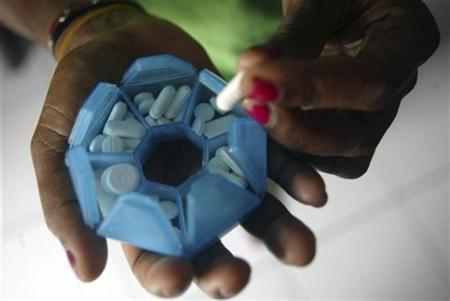
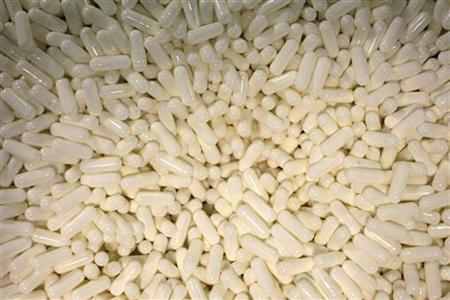
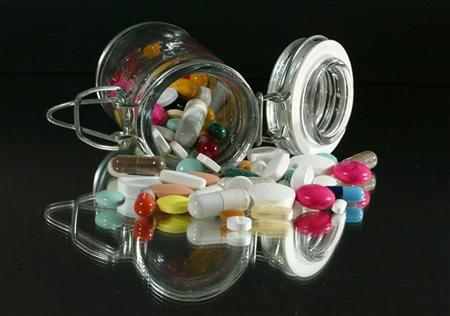

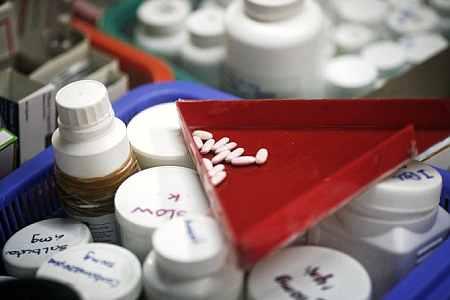

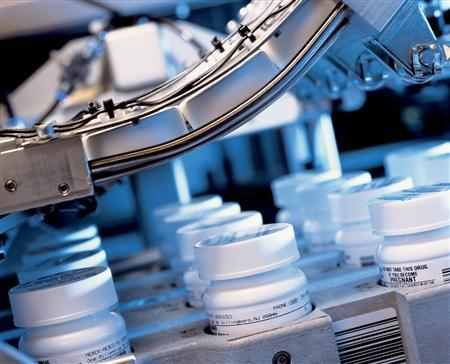
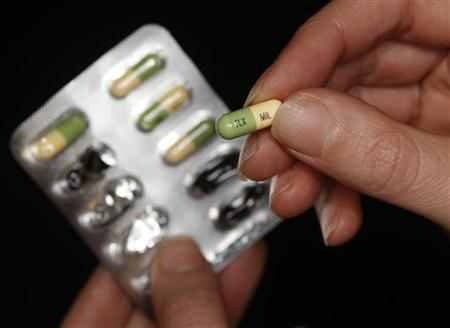


article